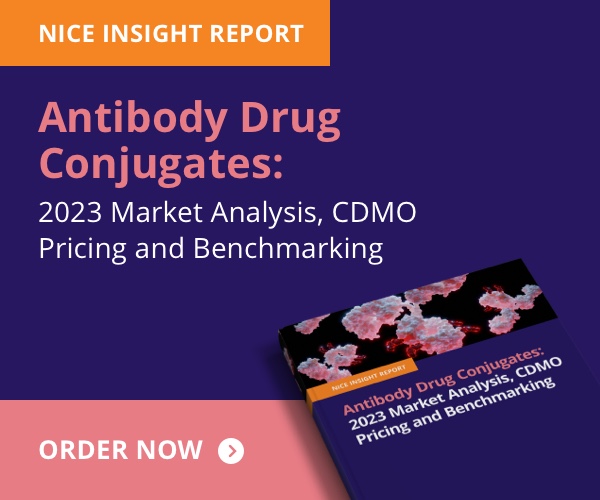- Larotrectinib demonstrated anti-tumor activity in Tropomyosin Receptor Kinase (TRK) fusion cancers regardless of patient age or tumor type
- 75% overall response rate (ORR) in TRK fusion adult and pediatric cancers by central assessment; 80% ORR by investigator assessment
- 86% of responding patients remained on larotrectinib or underwent surgery with curative intent
WHIPPANY, N.J., Feb. 21, 2018 /PRNewswire/ — Bayer and Loxo Oncology, Inc., (NASDAQ: LOXO) today announced the publication in The New England Journal of Medicine (NEJM) of larotrectinib data for pediatric and adult patients whose tumors harbor Neurotrophic Tyrosine Receptor Kinase (NTRK) gene fusions. These genetic alterations are present across a wide range of tumors resulting in uncontrolled Tropomyosin Receptor Kinase (TRK) signaling and tumor growth. Larotrectinib was designed to directly target TRK, turning off the signaling pathway that allows TRK fusion cancers to grow. These data published in NEJM include an additional three months of patient follow-up to data presented at the 2017 American Society of Clinical Oncology (ASCO) Annual Meeting.
In data from 55 patients across the Phase I adult trial, Phase II trial (NAVIGATE), and Phase I/II pediatric trial (SCOUT), larotrectinib demonstrated an overall response rate (ORR) of 75% (95% CI 61, 85) by central assessment and 80% (95% CI 67, 90) by investigator assessment. At the time of analysis, 86% of responding patients remained on larotrectinib or underwent surgery with curative intent. The median duration of response (DOR) and progression-free survival (PFS) had not been reached. Treatment related adverse events of any grade observed in more than 15% of patients in the clinical trials included increased alanine aminotransferase (ALT) or aspartate aminotransferase (AST) level (38%), dizziness (25%), fatigue (16%), nausea (16%) and constipation (16%).
"The data outlined in the NEJM publication shows the potential that larotrectinib has for patients who have TRK fusion cancers," said David Hyman, M.D., the NAVIGATE global principal investigator, chief of the Early Drug Development service at Memorial Sloan Kettering Cancer Center and senior author of the NEJM paper. "These data warrant screening for TRK fusions in patients of all ages with advanced solid tumors."
Bayer and Loxo Oncology are jointly developing larotrectinib for the treatment of adult and pediatric patients with TRK fusion cancers. In December 2017, Loxo Oncology initiated the submission of a rolling New Drug Application (NDA) to the U.S. Food and Drug Administration (FDA) for larotrectinib. Bayer plans to submit a Marketing Authorization Application (MAA) in the European Union in 2018.
"NTRK gene fusions, which can be identified through gene sequencing, are rare, but present in various pediatric and adult cancers. These data showcase the potential of larotrectinib for patients across a broad range of TRK fusion cancers," said Scott Fields, M.D., Bayer's senior vice president and head of Oncology Development at Bayer's Pharmaceutical Division. "We look forward to working with Health Authorities and the scientific community to make this available to patients as quickly as possible."
Overview of Data Published in NEJM
The published data were based on the intent to treat (ITT) principle, using the first 55 NTRK gene fusion patients with RECIST 1.1 evaluable disease enrolled to the three clinical trials, regardless of prior therapy or tumor tissue diagnostic method. The analysis included both adult and pediatric patients, ranging in age from four months to 76 years, who carried NTRK gene fusion tumor diagnoses. Tumor types present in more than 5% of patients included salivary gland, infantile fibrosarcoma, thyroid, colon, lung, melanoma, gastrointestinal stromal tumor (GIST) and other soft tissue sarcomas.
The primary endpoint for the analysis was overall response rate (ORR). Secondary endpoints included duration of response (DOR), progression-free survival (PFS) and safety. As shown below, as previously reported, the ORR was 75% by central assessment and 80% by investigator assessment.
|
Central Assessment (%) |
Investigator Assessment (%) | |
|
Overall response rate (95% CI) |
75% (61–85%) |
80% (67–90%) |
|
Partial response |
62% |
64%* |
|
Complete response |
13% |
16% |
|
Stable disease |
13% |
9% |
|
Progressive disease |
9% |
11% |
|
Not evaluable |
4% |
0 |
* Includes one patient with an unconfirmed partial response as of the July 17, 2017 data cut-off, which has subsequently been confirmed.
Median DOR and median PFS had not been reached. As of the July 17, 2017 data cutoff, 86% of responding patients remained on treatment or had undergone surgery with curative intent.
Treatment related adverse events of any grade observed in more than 15% of patients in the clinical trials included increased ALT or AST level (38%), dizziness (25%), fatigue (16%), nausea (16%) and constipation (16%). Eight patients required larotrectinib dose reductions. Adverse events leading to dose reductions included AST/ALT elevation, dizziness and neutrophil count decrease, all grade 2 or 3 events. No patients discontinued larotrectinib due to an adverse event.
Primary resistance (defined as the best response being progressive disease) was observed in six patients in the study. Of the six, one patient had been previously treated with another TRK inhibitor and tumor sequencing prior to larotrectinib dosing revealed a solvent front mutation, a known resistance mechanism. Tumor tissue was analyzed for three of the five remaining patients. In all three patients, TRK immunohistochemistry failed to demonstrate TRK expression, potentially implicating that an initial NTRK gene fusion test was false positive or that the molecularly identified fusion was not expressed at the protein level and therefore explaining the lack of response in these patients.
Ten patients experienced disease progression while on treatment after a documented objective response or stable disease for at least six months, a phenomenon known as acquired resistance. Nine of the ten patients had assessments of post-progression tumor or plasma samples, and NTRK kinase domain mutations were identified in all of those samples tested. In seven of those assessed, investigators identified solvent front mutations as a convergent mechanism of acquired resistance; other NTRK kinase domain mutations were identified in the remaining two patients tested.
About Larotrectinib (LOXO-101)
Larotrectinib (LOXO-101) is an investigational oral and selective drug in clinical development for the treatment of patients across a wide range of cancers that harbor abnormalities involving the Tropomyosin Receptor Kinases (TRKs). Growing research suggests that the Neurotrophic Tyrosine Receptor Kinase (NTRK) genes, which encode for TRKs, can become abnormally fused to other genes, resulting in growth signals that can lead to cancer in many sites of the body.
Larotrectinib has been granted Breakthrough Therapy Designation, Rare Pediatric Disease Designation and Orphan Drug Designation (ODD) by the US Food and Drug Administration. For additional information about the larotrectinib clinical trials, please refer to www.clinicaltrials.gov or visit www.loxooncologytrials.com. Larotrectinib has not been approved by the U.S. Food and Drug Administration, the European Medicines Agency or any other health authority.
In November 2017, Bayer and Loxo Oncology entered into an exclusive global collaboration for the development and commercialization of larotrectinib and LOXO-195, a next-generation TRK inhibitor in clinical development. Loxo Oncology leads worldwide development and U.S. regulatory activities. Bayer leads ex-U.S. regulatory activities and worldwide commercial activities. In the U.S., Bayer and Loxo Oncology will co-promote the products.
About Oncology at Bayer
Bayer is committed to delivering science for a better life by advancing a portfolio of innovative treatments. The oncology franchise at Bayer now includes four oncology products and several other compounds in various stages of clinical development. Together, these products reflect the company's approach to research, which prioritizes targets and pathways with the potential to impact the way that cancer is treated.
© 2018 Bayer
BAYER and the Bayer Cross are registered trademarks of Bayer.
Media Contact:
Rose Talarico
Tel: +1 862.404.5302
Email: rose.talarico@bayer.com
Forward-Looking Statement
This news release may contain forward-looking statements based on current assumptions and forecasts made by Bayer Group or subgroup management. Various known and unknown risks, uncertainties and other factors could lead to material differences between the actual future results, financial situation, development or performance of the company and the estimates given here. These factors include those discussed in Bayer's public reports which are available on the Bayer website at www.bayer.com. The company assumes no liability whatsoever to update these forward-looking statements or to conform them to future events or developments.
Intended for U.S. Media Only
PP-910-US-0010
SOURCE Bayer




